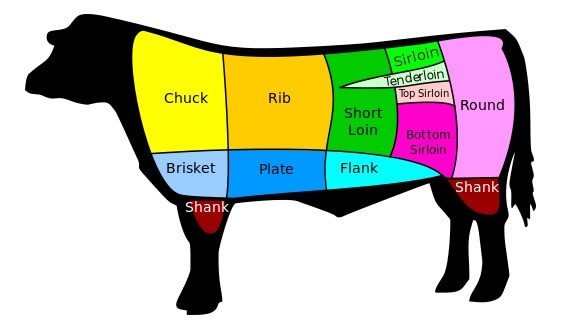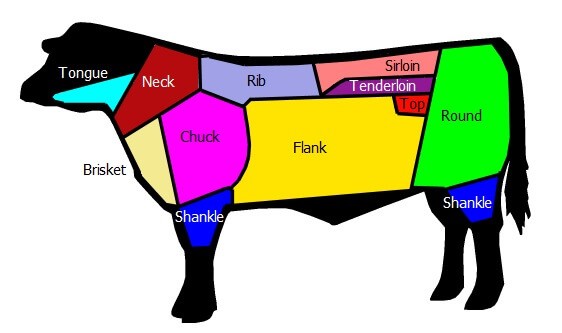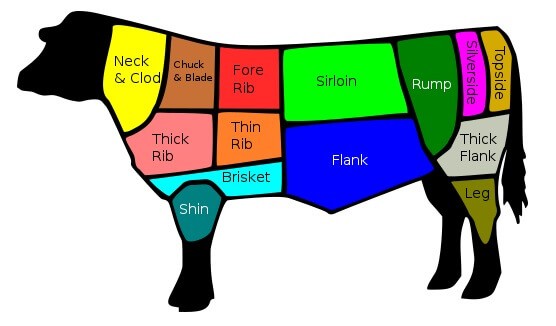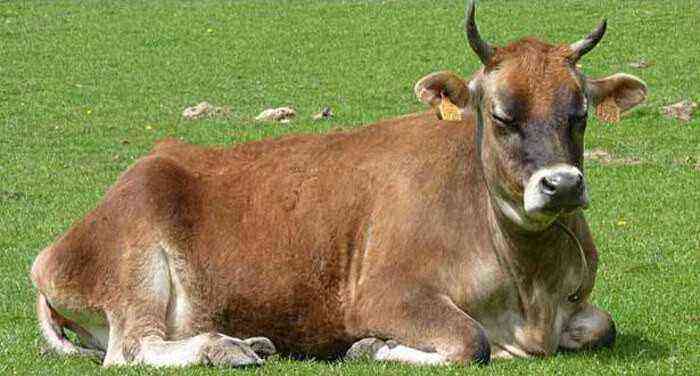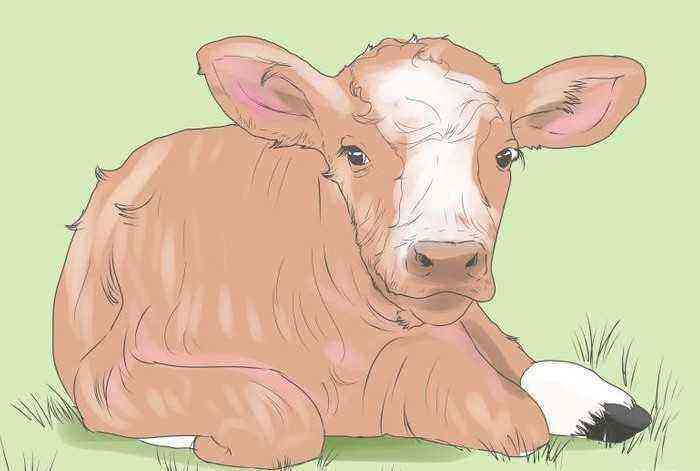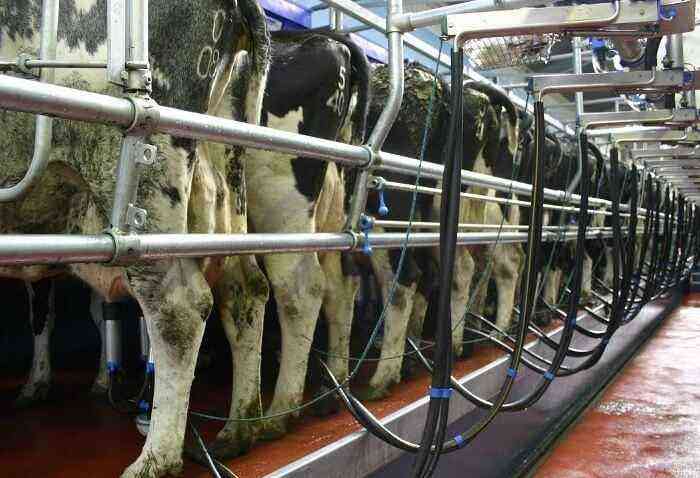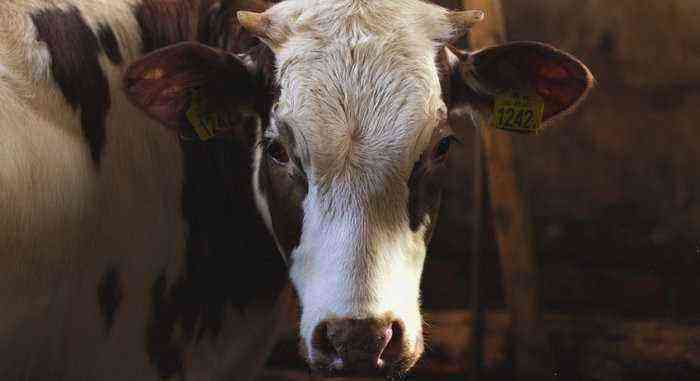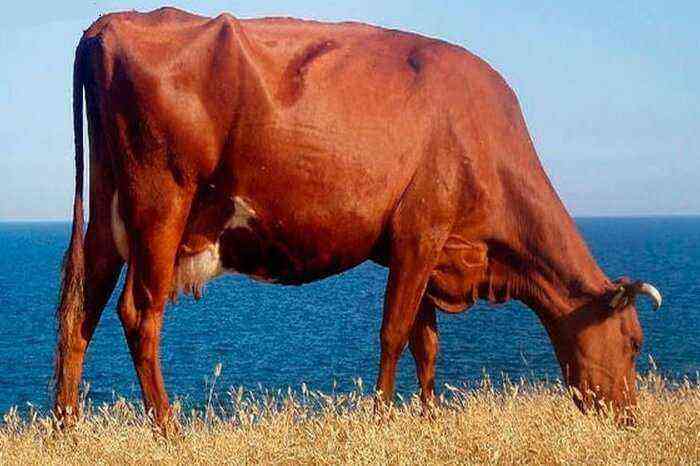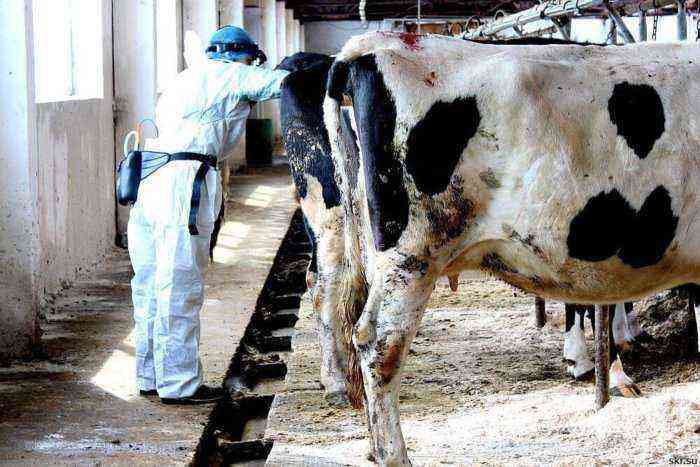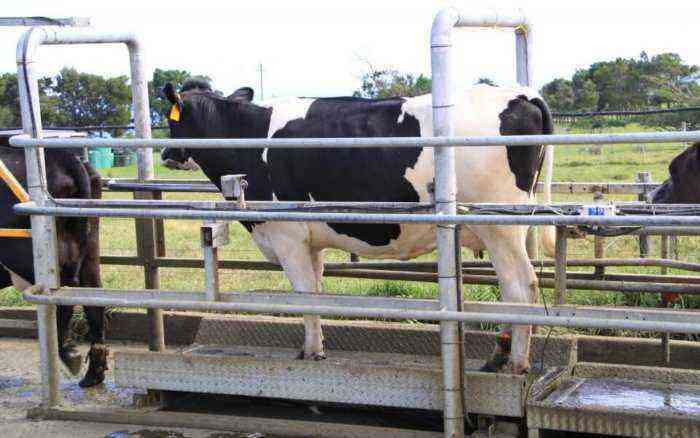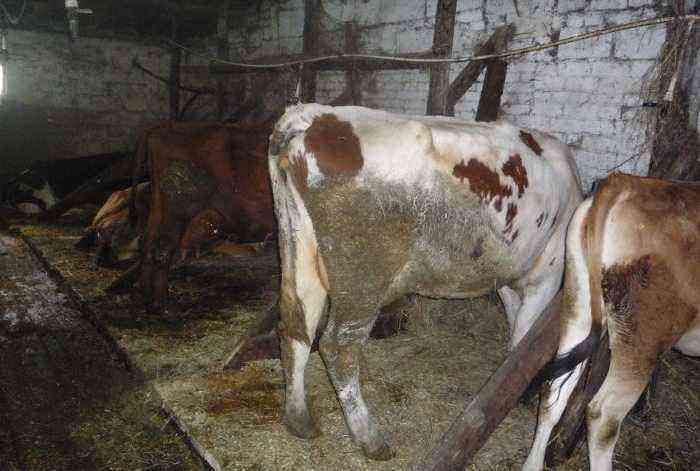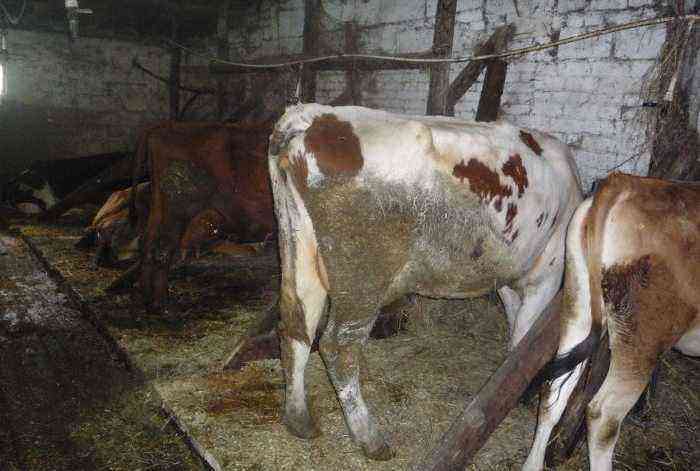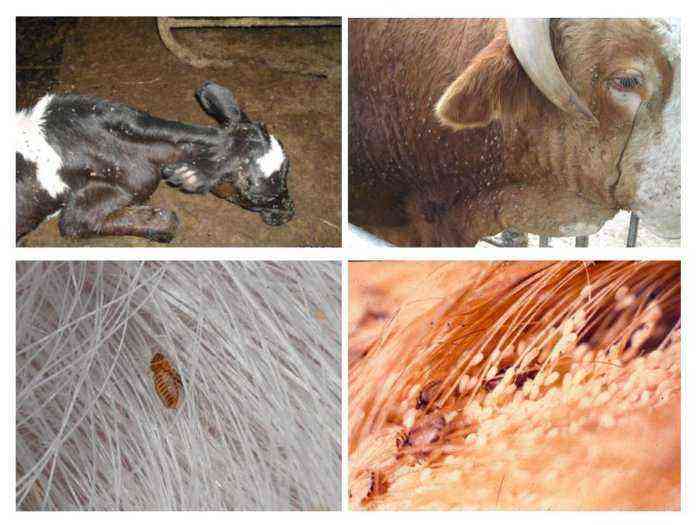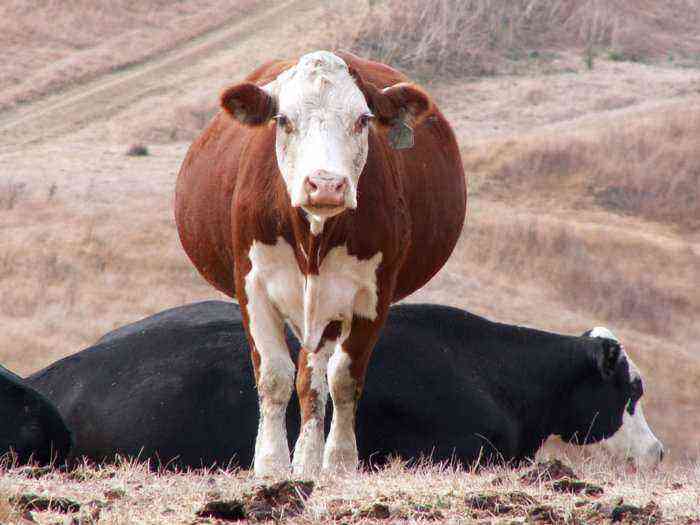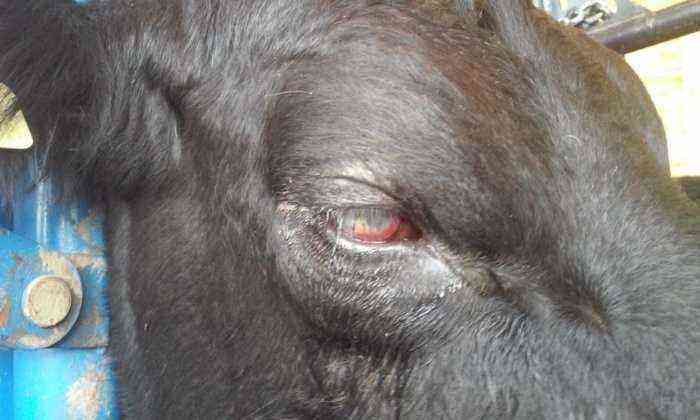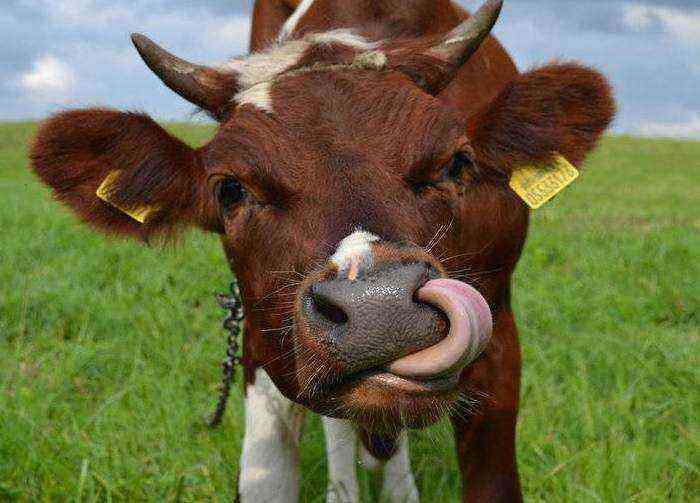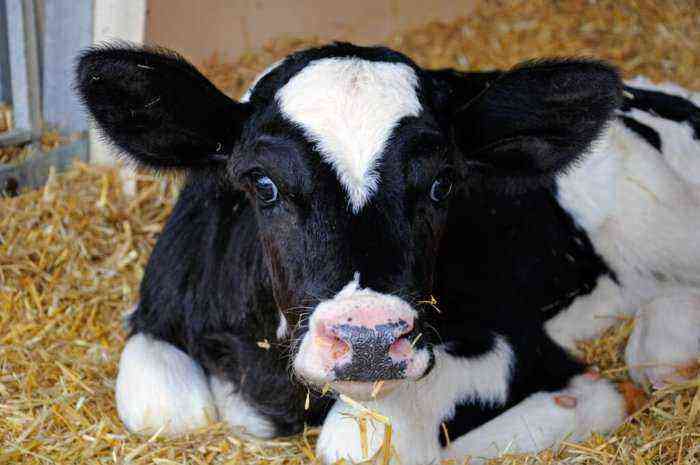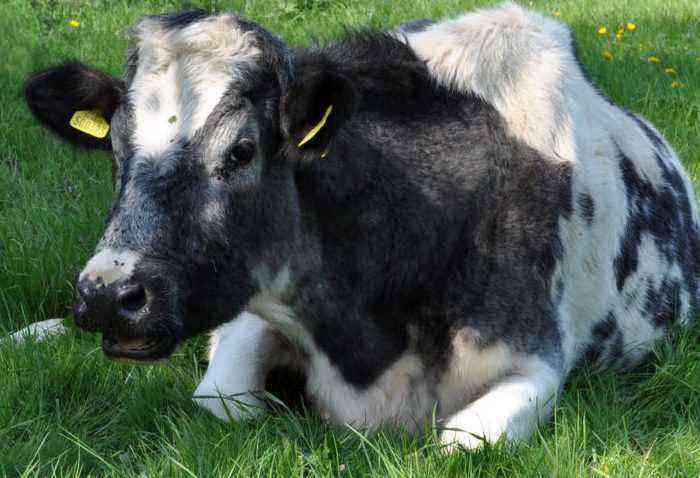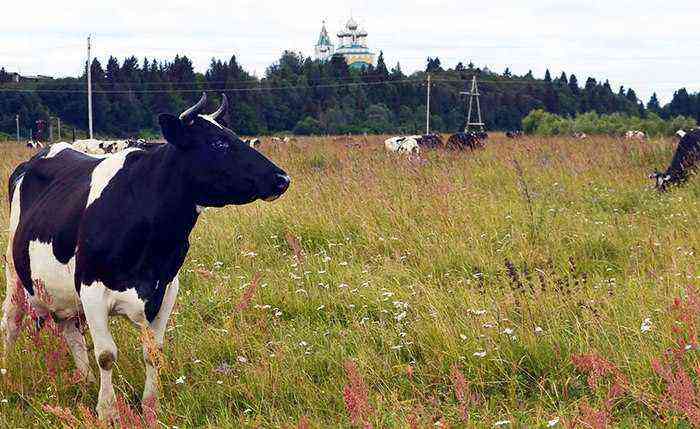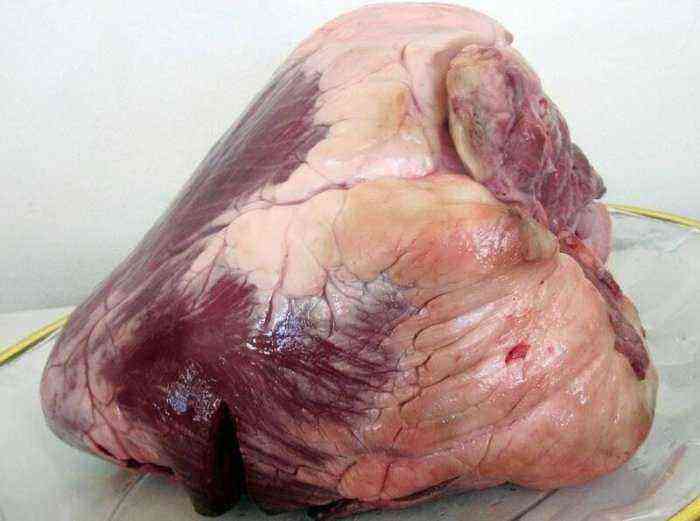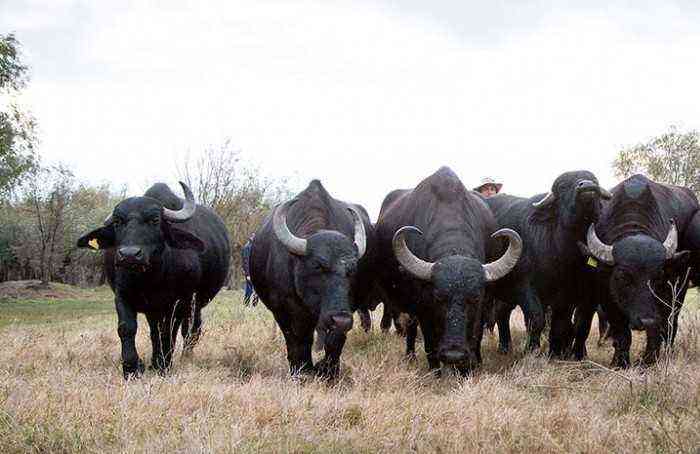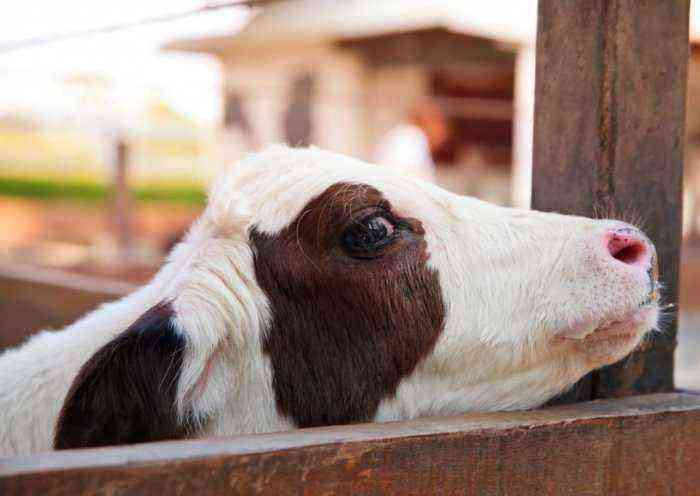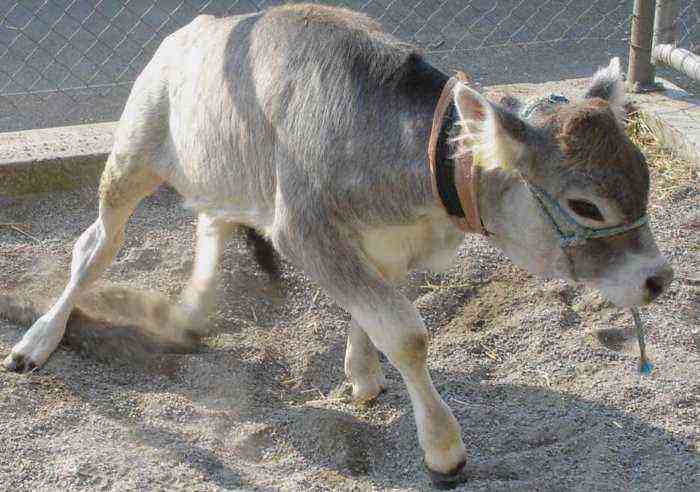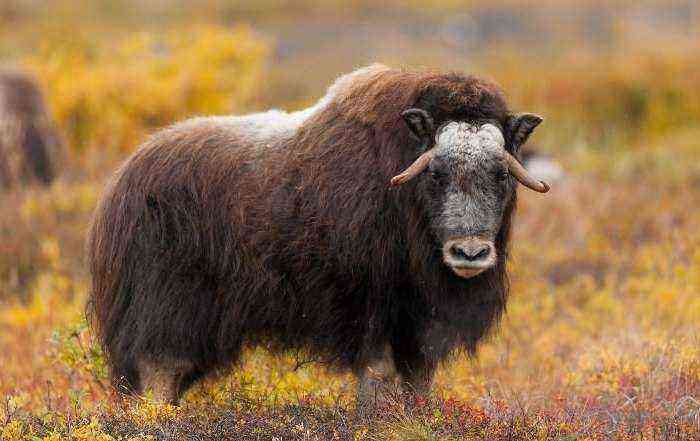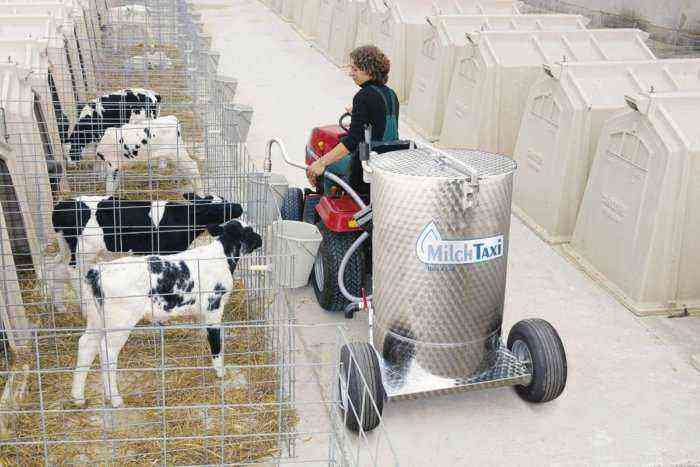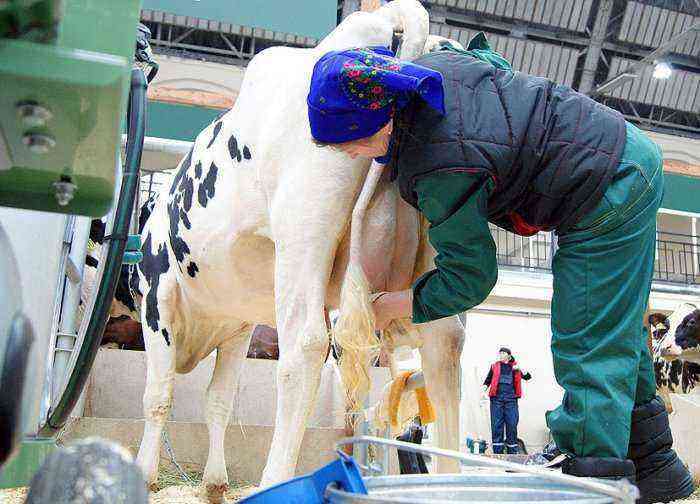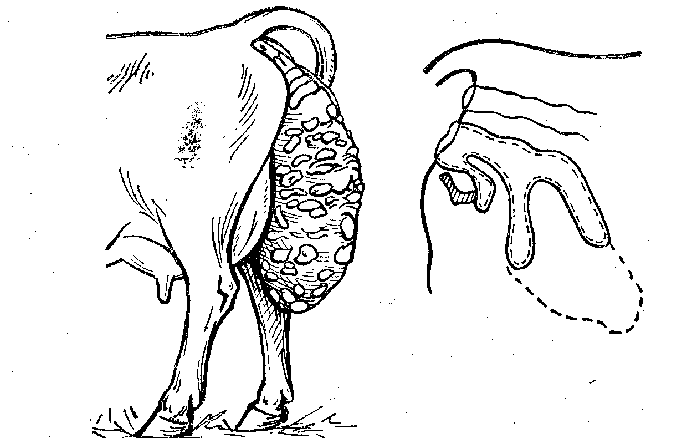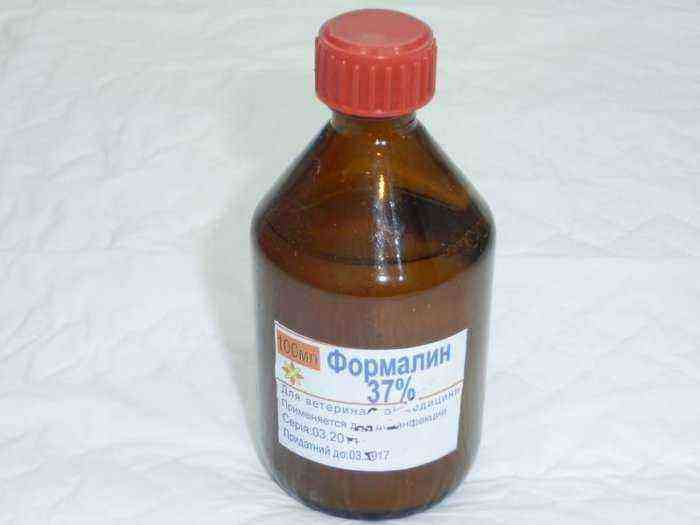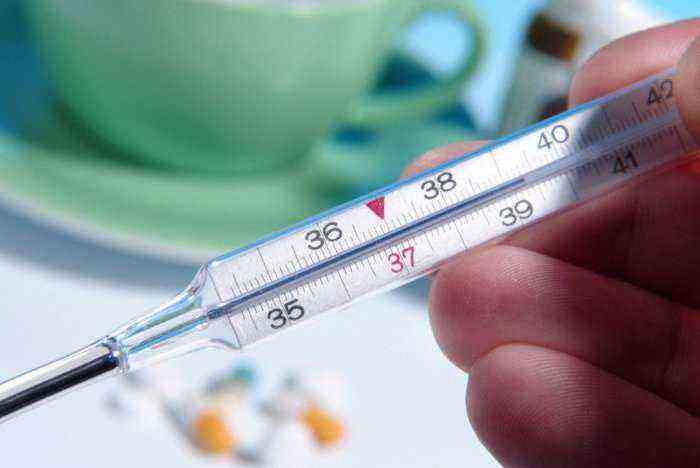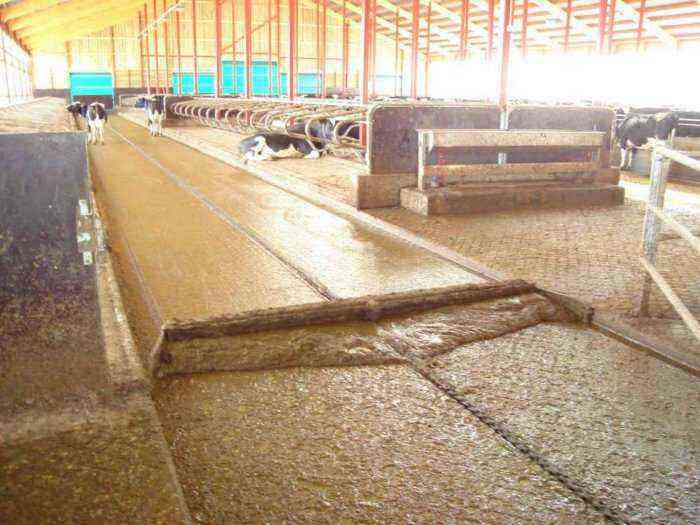Today, raising cattle for meat is one of the most promising business ideas. Quite often, this type of animal husbandry is practiced at home. The main reason for the interest in the direction is the high cost of beef on the market. But it is worth noting that although there are quite a lot of people who want to breed cattle, not all of them have an idea of uXNUMXbuXNUMXbhow to butcher a cow after slaughter. And, by the way, if such a procedure is performed incorrectly, it is quite possible to spoil most of the carcass. Therefore, this process requires certain knowledge and experience.
Classic beef cut
Cutting the main parts
After slaughter, skinning and removal of the entrails, they proceed to the direct cutting of the cow carcass. It begins with the division of the carcass into two parts. Further, half-carcasses are divided into cuts, which are much easier to roll and clean. This process takes place in several stages:
- The half carcass is divided in half. On the carcass, a flank is cut with a sharp knife along the line of the last rib. In this direction, the muscle tissue is cut to the vertebrae. When the bone is freed from the muscles, the ridge is cut in the area between the 13th and 14th vertebrae.
- A shoulder blade is cut off from the half carcass. To do this, first carefully separate the muscles connecting the scapular bone with the sternum. Next, the muscle tissue is cut under the shoulder bone.
- Carefully separate the neck. With the help of a billhook, cut the meat along the line from the sternum to the first vertebra of the back. After that, an incision is made at the junction of the cervical and dorsal spine.
- Separate the breast cut. On the remaining half-carcass, an incision is made in the pulp at the junction of the dorsal and lumbar spine, as well as along the last rib.
- A notch is removed along the entire length of the spine. To do this, it is separated from the ilium. Further, more and more pulling on themselves, they are separated from each individual vertebra.
- Cut off the pelvis. It is cut off by cutting the ridge in the area of separation of the sacral and lumbar. The inguinal part is cut along the contour of the hind leg.
- The lumbar region with the flank and upper costal part (hem) is separated from the pelvic part.
At meat processing enterprises, the carcass is often divided not into separate components, but into quarters. Only after that they are cut according to one of the selected schemes. To obtain quarters, the carcass is divided along the entire length of the ridge. Then each half-carcass is divided by a cut along the line from the first lumbar vertebra to the line of passage of the thirteenth rib.
The hindquarter is further disassembled into the pelvis with the sacrum, flank and loin. The remaining anterior ones include the shoulder blade, thoracic portion, neck, and dorsal portion with ribs. As a rule, the weight of the forequarter is at least 55% of the total weight of the side.
deboning
Immediately after cutting the main parts of the beef, the deboning process follows. This procedure is the separation of the pulp from the bones of the carcass. Deboning is considered ideal if there are no small pieces of meat on the bones, and there are no deep cuts on the pulp arrays. This procedure is carried out using a special set of boning knives.
Boning knife set
Deboning of each part is carried out individually. Implement the procedure in the following way:
- Shoulder blade. When deboning the shoulder blade, the meat is first separated from the tendons present. Then, with a knife, the muscles are cut off from the ulna and radius. After that, the meat is cut along the entire length of the shoulder bone and the shoulder bone is removed. At the end, the veins are cut off from the resulting piece of pulp.
- Neck. From the neck, all the meat is removed in one piece, carefully cutting it off at the points of attachment to the vertebrae.
- Brisket. The thoracic part of the pulp is separated from the dorsal-breast cut in the area of its fusion with the ribs. In this case, the knife makes a line through the cartilage from the first to the end of the thirteenth rib of the carcass.
- Thick edge. This piece of muscle tissue is cut off especially carefully. Start cutting from the thirteenth rib. Along the connection line of the thick edge with the hem, an almost horizontal cut is made to the fourth rib. After that, the meat is cut with a knife a third of the rib down and again horizontally brought to the first.
- The pulp of the subscapularis. In fact, it is removed from the bone along with the previous part. Only after that a square layer of meat is separated.
- Hemline. It is carefully cut from the ribs in one piece.
- Thin edge. When separating this part, it is carefully cut along the ridge. Then the meat is removed from the rest of the bones, in parallel separating the flank.
- Posterior part. The first step in deboning this cut is the separation of the tibia from the femur. To do this, at the junction, all tendons and meat are removed and the joint is cut. Next, the iliac bone is separated. At the end of the procedure, the meat is cut along the femur and removed, after cleaning off all the pulp.
Important! At the end of the deboning of each of the cuts, the bones are additionally cleaned of meat residues.
Trimming
Immediately after the previous stage, cleaning of the meat follows. It includes the removal of veins, thick films, remnants of veins, fat and cartilage. Also, during stripping, excess rims are removed from the pieces (pieces of pulp that spoil the general appearance of the main parts).
Almost all layers of meat obtained at the previous stage are subject to stripping. When cleaning the pulp of the neck, first of all, parts of the periosteum are removed from it, and only then the remaining tendons. Excess fatty formations and films are cut from the meat of the shoulder blade. From the sternum, the remains of cartilage are cut out, which were connected to the rib and excess fat deposits. To give the thick edge a more attractive appearance, not only the veins are removed from it, but also the thin marginal sections of the meat.
Beef
Particular attention is paid to the posterior cut. In the limbs of the animal there are a large number of veins and tendons. In addition, large reserves of fat are also collected here. All this is carefully removed from the pulp.
Separation by grade
It is worth noting that all the obtained parts of the animal carcass, depending on the taste, consistency and other factors, are divided into three grades:
- Higher.
- First.
- Second.
The main criterion for separating all beef meat into varieties is the presence of veins and thin films of connective tissue in its composition. Thus, in the composition of premium meat, such inclusions occupy no more than 3–4% of the total mass. This category includes:
- brisket;
- meat from the back;
- rump;
- fillet part;
- rump;
- sirloin.
The pulp, which belongs to the first grade, contains about 5% connective tissue. Such meat has a less tender texture than premium products. The first class includes:
- scapula;
- shoulder pulp;
- neck;
- pasture.
The percentage of veins in beef grade 2 ranges from 10 to 23%. This category includes shanks and cuts.
It is worth noting that, in addition to quality, the beef variety also determines the recommended way to use it. So, second-class meat is applicable for cooking rich broths. The pulp of the first and highest grade is often fried, baked and cooked on coals.
Scheme of cutting beef carcass
In addition to the above scheme, there are also other options for butchering the carcass. In general, they are all similar to each other, but there are still certain differences. So, the American scheme for cutting beef carcasses involves dividing into 13 main parts.
American beef cutting scheme
When cutting half carcasses using the Dutch method, only 12 parts are obtained. At the same time, almost the entire side and lower abdomen of the cow, in contrast to the American cut, is cut out in one large layer. At the same time, the names of the parts are also different.
Dutch scheme for cutting beef carcasses
The British tradition is characterized by more compact pieces. In this regard, 14 parts come out of the half carcass.
British beef carcass cutting scheme
Another popular scheme involves dividing a beef carcass into 19 components. This scheme is called South American. When it is implemented, the following cuts are obtained:
- Neck.
- Scapula.
- Blade part.
- Breast part.
- Rump.
- Upper rump.
- Loin
- White meat.
- Pashina.
- Golyashka.
- Ankle.
- Thighs.
- The anthem.
- Thin edge.
- The inner part of the cut of the back of the pelvis.
- Thick edge.
- Thick loin.
- False fillet.
Also among the well-known cutting schemes are Australian, German, Danish and many others.
Where is the hungry fossa in a cow?
The so-called hungry hole has a certain importance in the implementation of cutting. This formation is a small depression in the pelvic region of the cow. Upon closer examination, you can see that it has the form of a triangle, which is formed by:
- Last rib on one side.
- The protrusion formed by the pelvic bone, on the other.
- Processes of the vertebrae from the third.
By feeling the hungry fossa, experts can easily identify signs of bloating, malaise and other health problems in the cow. In addition, according to the state of the hungry hole, one can also judge the fullness of the stomach of livestock with food. With its excessive amount, the stomach during the cutting process can be damaged, which will negatively affect the quality of the meat.
Where is the scar on a cow?
The digestive system of a cow is quite complex. To provide the massive body of the animal with nutrients, nature provided him with a large stomach, consisting of several compartments at once. And the largest of them is the scar. The capacity of this formation can reach up to 200 liters. Moreover, it is in this part of the stomach that about 70% of all food entering the esophagus is digested.
Of course, in order to digest large amounts of food, such an organ contains various bacteria and enzymes. They perfectly cope with their function. But if during the cutting the integrity of the scar is damaged, all its contents fall on the adjacent muscle arrays. This can significantly affect the taste of the product. Therefore, in order to carefully remove the scar from the dead carcass, you should know exactly where it is located.
Most of the scar is located on the left side of the abdominal cavity, and only a small part of it goes to the right half. It starts just behind the diaphragm and ends in the pelvis.
Butchering a slaughtered cow carcass is a rather complicated process that requires some skill and knowledge. Carry out cutting in accordance with certain schemes that came into domestic use from different countries. But each of them involves several main stages, including primary cutting, deep cutting, deboning, cleaning and trimming. Each of these processes requires strict adherence to the instructions and experience.


